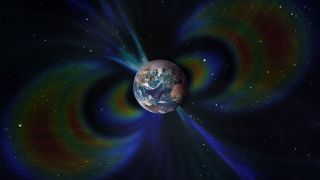Time is a commodity that is limited in its nature especially for all living things but time is also conceptualized with a PAST, PRESENT, and a FUTURE; although, we never see the past living in the present that always seems to lean more directly into the future... since time moves forward not backward; and, we accept the past as what has been simply because we can read the records. BUT, time is somewhat elusive in that we can never see what just happened and what just happened is never behind us even when we are walking backwards into our future... so where did our immediate past go?
The breeze that blows by... comes and goes but as it touches our bodies is all we know of its existence other than what we may observe but where it came from has disappeared into our past never to be seen again so we do not know for sure if the conditions that brought the breeze to us still there... or perhaps the past goes into some kind of holding dimension.
Using telescopes we can see where space came from and where it is going but that ability stops as we observe the life we are living. There will always be cars behind us on the interstate but we are all moving forward at the same relative time and even though we see a landscape behind us as we drive by, the conditions of that landscape are different than when we were just there... just as every millisecond of our present is different so too is every millisecond of our past.
SO... again... where does our past go and that it goes so fast we cannot return?
A jet stream is a visual reminder and the actual past of a fast moving aircraft as it moves into its future pausing less than a nanosecond in its present; however, the physical aircraft's past is never seen as if it never been there in the first place yet we see its reminder as it floats behind eventually dissipating.
Grave Stones are a reminder of someone's past but that is not exactly what I am talking about... I want to know where our immediate past goes when we are still alive always moving into our future... this is the question that bothers me and to which there is no easy reply and only speculative proof and our existence in our future that it actually happened at all or why we can never return.








